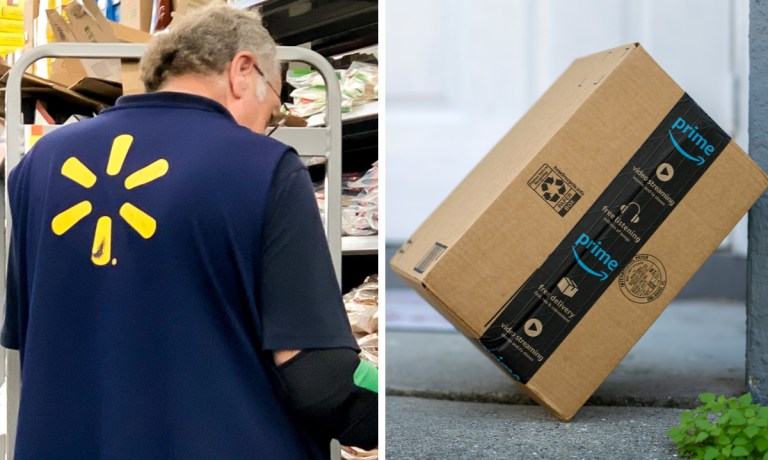
Is this year gearing up for another round of slashing costs and seizing revenue opportunities? Signs from retail giants Amazon and Walmart point in that direction. But the burning question is: How will these moves hit consumers?
According to a recent PYMNTS report, consumers expect a reduction in the inflation rate in the upcoming months and years. Nevertheless, they are adjusting their spending plans, suggesting a potential inclination to rebuild their savings. This presents a combination of signals for merchants, and they will need to adopt innovative and personalized approaches to persuade consumers to spend.
The choice to reduce spending is evident in the results of PYMNTS Intelligence from the previous year highlighting the impact of inflation on consumers. Around 8 out of 10 individuals depleted their savings to meet expenses, and about 12% exceeded their earnings in the six months leading up to the holiday shopping season.
The impact is particularly pronounced for those earning between $50,000 to $100,000, with only 37% in the middle-income segment and 45% among high earners anticipating an increase in their savings in the near term.
Read more: Consumers Temper Their Spending Plans Despite Slowing Inflation
As PYMNTS reported this week, Amazon has terminated about 30 employees, less than 5% of its staff, in the Buy with Prime unit.
“We regularly review the structure of our teams and make adjustments based on the needs of the business and, following a recent review, we’ve made the difficult decision to eliminate a small number of roles on our Buy with Prime team,” an Amazon spokesperson said in the report.
Introduced in 2022, Buy with Prime extends Prime benefits to third-party merchants. The service has garnered significant adoption from merchants and received positive feedback from customers, leading Amazon to further invest in the offering. In early 2023, Buy with Prime expanded its availability, welcoming additional U.S. brands like BigCommerce and Sustainable Glam.
The service has introduced enhancements, including order tracking through Amazon’s website and mobile app, along with the addition of live chat support with customer service.
“Buy with Prime is a top priority for Amazon, with strong adoption from merchants and positive feedback from customers, and we will continue investing significant resources in Buy with Prime to build on that momentum,” the Amazon spokesperson said.
Read more: Amazon Lays Off 5% of Buy With Prime Staff
And in another cost-cutting move, Amazon is restructuring Alexa for an upcoming paid subscription plan. However, internal conflicts, as highlighted in the PYMNTS report, might lead to a delay in the launch.
While targeting a June 30 release, alternative reports reveal concerns about the quality of the Remarkable Alexa responses, suggesting the need for improvements. The testing phase indicated shortcomings in handling multiple service requests simultaneously.
Additionally, there are doubts about users’ willingness to pay for Alexa’s enhanced features.
Read more: Amazon Employees Debate Idea of Charging for Alexa
Meanwhile, Walmart has shut down its technology and business innovation incubator, which has been around since 2017. This unit was responsible for introducing retail innovations such as shopping via text, voice commerce features, and the InHome direct-to-fridge delivery service.
“We’ve graduated capabilities from this operating approach that are now fully embedded in our organization,” Walmart Chief Financial Officer John Rainey reportedly said a memo. “The responsibility to shape the future of retail is now shared by all segments.”
However, closing its innovation lab doesn’t signal Walmart giving up on providing its customers with modern experiences. As an illustration, this month the retailer introduced a renovated Quakertown Supercenter in Bucks County, Pennsylvania, known as the “store of the future.” This store integrates interactive technology to smoothly merge online and in-person shopping experiences.
Read more: Walmart and Amazon Get Back to Basics to Elevate Signature Shopping Experiences
Yet staying competitive is getting more expensive, especially with eCommerce giant Amazon expanding its retail technology efforts. They’re not just focusing on grocery and convenience stores but also introducing their “Just Walk Out” frictionless checkout tech in hospital cafeterias and clothing stores. Amazon’s wide-ranging portfolio lets them integrate shopping experiences, even into Prime Video content.
Despite this, retailers have grappled with the challenge of keeping up with Amazon’s costs for years. This includes covering expenses from free shipping to ventures in the metaverse and managing in-store digital restaurants. As a result, many retailers have had to scale back on their technology investments.
Nevertheless, retailers are aware of the critical role connected experiences play for consumers in stores.
According to PYMNTS Intelligence, 83% of general retailers believe consumers would likely switch merchants if not provided with mobile apps, in-store barcode and QR code scanning apps. Additionally, 79% think customers would consider switching if alternative in-store payment methods were not offered.
According to PYMNTS’ Karen Webster: “2024 will be the year that brick-and-mortar retailers will be forced to think beyond incremental improvements in in-store checkout and begin using their physical footprint to support the shopping journey that consumers want. And not because busy consumers use digital channels more often, but because consumers have embraced new digital buying options that keep them away from the store entirely.”
Read more: The Eight Pivotal Strategies for Payments and the Digital Economy in 2024
According to data from PYMNTS Intelligence, over 30% of retail subscribers and 20% of all consumers rely on auto-fill methods for most or all their personal product purchases. This percentage increases to 28% for Generation Z and 33% for millennials.
So, will Amazon and Walmart’s moves cut it as consumers keep reshaping their spending habits? Only time, inflation and the consumer will tell.